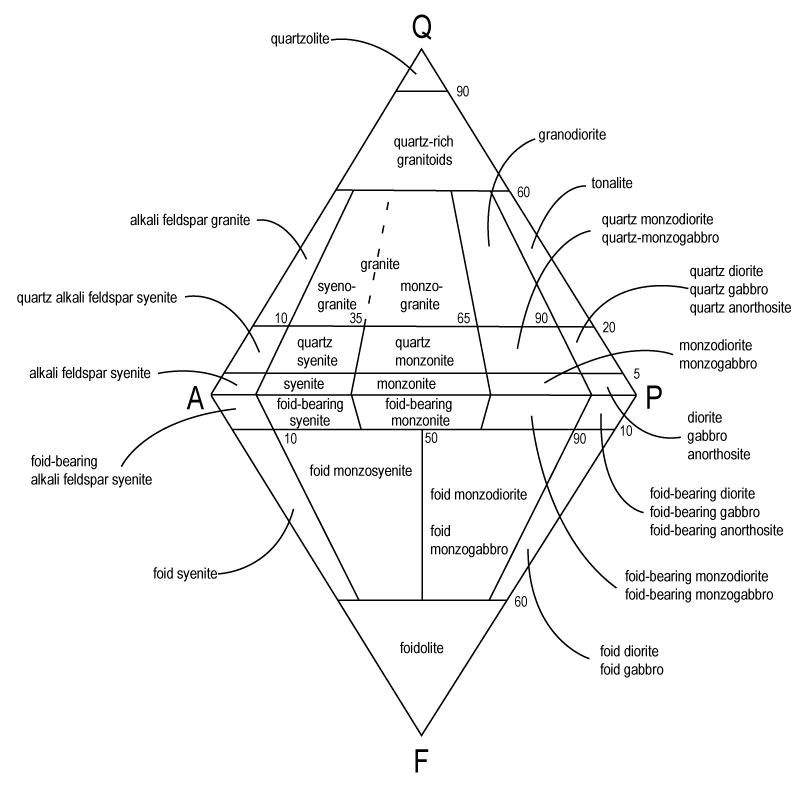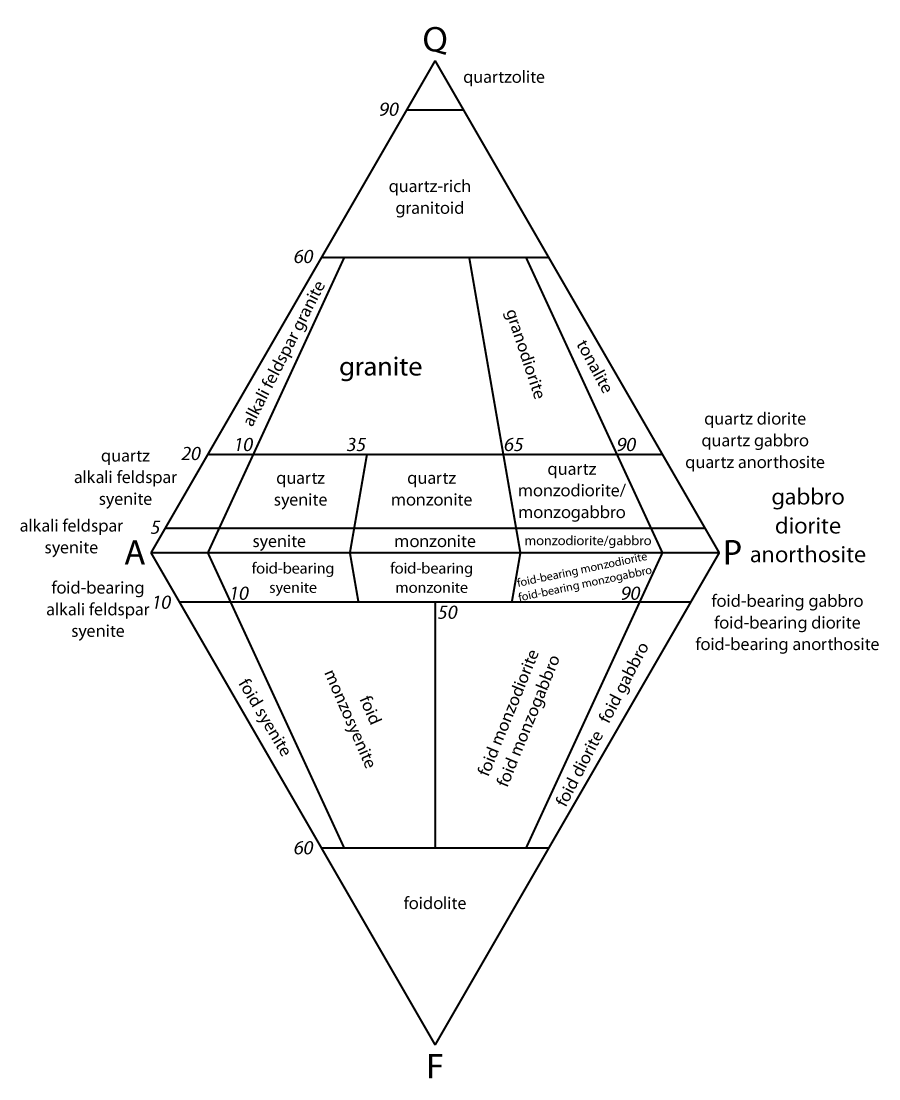The classification of igneous rocks used to be a real mess. The proliferation of geological terms took especially enormous dimensions there. More than 1000 rock types were described, many of them had overlapping meanings and the whole collection of terms lacked any kind of systematic structure. It is different now. We have a systematic overview and a firm basis to guide the identification. I like it for several reasons. First of all, it makes our work easier. We have something to rely on. Second, we can be reasonably sure that my granite is granite for you as well. It makes communication between geologists easier. Third, geology is often too narrative and descriptive. Maybe partly for that reason geology is sometimes ridiculed and treated not as a real science or at least not as tough science as physics or chemistry.

There are several reasons why this is the case. Geology is very complex, natural processes are often impossible to observe (metamorphism for example) or take place very slowly. That’s why we are unable to work like physicists, our problems are too complex to solve mathematically. We are still often forced to just describe and speculate instead of building models. However, we should strive to force ambiguity out of geology. One way to do it is to strictly define what we actually mean if we say that this rock sample I am holding in my hand is granite.
For these reasons I believe that the diagram below is probably my favorite geological illustration, or at least one out of several similar diagrams that are used to identify rocks. This article is my entry to the Accretionary Wedge #43 hosted by Hollis at In the Company of Plants and Rocks.
How to read this diagram. There are four minerals or mineral groups chosen as important cornerstones of the classification. These are quartz (Q), alkali feldspars (A), plagioclase feldspars (P), and feldspathoids (F). F and Q for chemical reasons can not exist together in one plutonic rock. Other minerals may and almost certainly occur in these rocks as well but they have no significance in this classification scheme. So, the whole diagram is actually composed of two ternary plots (QAP and FAP). To use the classification, the concentration (the mode) of these minerals must be known and recalculated to make their sum 100%.
Example: a plutonic rock that contains no alkali feldspar and no feldspathoids but contains lots of pyroxenes (neglected in this diagram), plagioclase feldspar and few quartz grains is probably gabbro (located at the right edge of the diagram, little bit up from P towards Q). The diagram doesn’t say whether it is gabbro, diorite, or anorthosite. There are another criteria used to decide that. Note that this diagram is not used for all plutonic rocks. Ultramafic rocks are the most important plutonics that have separate classification diagrams.
QAPF diagram is used to classify plutonic rocks. Although similar diagram exists for volcanic rocks as well but because volcanic rocks are typically too fine-grained for mineralogical analysis, they are classified according to their chemistry and TAS diagram is used instead of QAPF diagram. I have also written a post about how QAPF and TAS diagrams are related and how to make them match each other: A little fun with diagrams.

